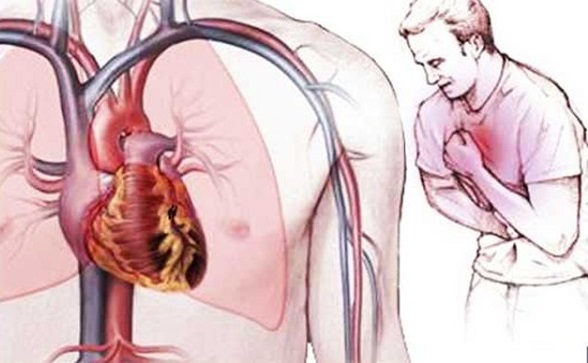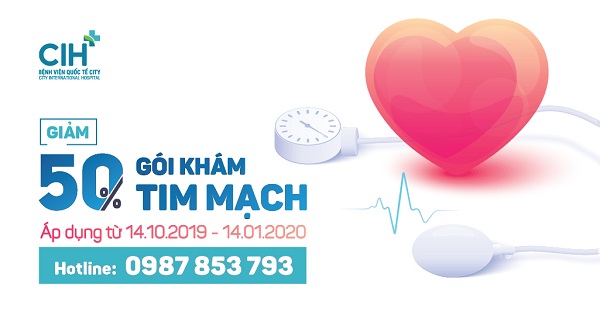Coronary artery disease (CAD) is the number one cause of death globally among cardiovascular diseases and is on the rise in Vietnam.
The necessary knowledge about the disease will help to detect the disease early, prevent and treat it more effectively.
The heart muscle, like other organs in the body, needs to be given adequate oxygen-rich blood to function. Blood is supplied to the heart muscle through the coronary artery system. The branches of coronary arteries are derived from the aorta. Coronary artery system includes right coronary artery and left coronary artery. Coronary arteries divide into smaller and smaller branches that feed each region of the heart muscle. Coronary artery disease occurs when one or more branches of the coronary artery are narrowed or blocked due to various causes (usually due to coronary atherosclerotic plaque) leading to coronary artery unable to meet needs. Oxygen for the heart muscle. Usually when the coronary artery is narrowed from 50% of the diameter of the artery, then symptoms of the disease will appear.

Coronary artery disease - the leading cause of death in cardiovascular disease.
Signs identify coronary artery disease
Angina
The most basic and important sign for identifying coronary artery disease. Pain that feels tight, constricted, squeezed or sometimes just feels like something is unpleasant in the chest. The most common pain site is behind the breastbone, between the chest or the heart area. The pain may be localized or spread to the neck, jaw, shoulder or left arm, and rarely in the back or spine area. The pain is usually very short for only 10-30 seconds or a few minutes; If the pain persists for more than 15 minutes, it is likely that you have a heart attack.
There are 2 types of angina: stable angina and unstable angina.
- Stable angina is caused by atheroma that causes coronary artery stenosis, which occurs repeatedly when the patient tries to reach a certain level or in the same situation. Acute coronary syndrome occurs when any angina occurs (unstable angina), either at rest or with exertion but not relieved by exertion.
- Unstable angina is dangerous if not treated promptly because it is easily converted into a heart attack. The main sign of distinguishing between stable and unstable angina is the circumstances in which angina occurs: during rest or exertion. If you exert a certain degree of stability, it shows stability, but if it appears when you rest, it is unstable and there is a risk of infarction or sudden death.
When there are signs of angina, the doctor will order a number of necessary tests to see if you have coronary heart disease such as: stress test, ECG Holter, cardiac Doppler ultrasound, ultrasound exertional heart; coronary angiography ...
What to do with angina?
First of all, it is necessary to take an immediate rest, meaning that every effort should be immediately stopped, take nitroglycerin lozenges or spray under the tongue and go to the hospital as soon as possible to be able to get an accurate diagnosis and treatment. timely treatment. This is an extremely important move, helping to save many lives because even a very small effort can be dangerous to the patient's life.
Treatments for coronary artery disease
Medical treatment: is a drug treatment method; Can use one or more combination of drugs such as antiplatelet agents (aspirin, plavix); beta receptor inhibitors (such as tenormin, betaloc ...); calcium channel blockers (amlordipin, tildiazem ...); cholesterol-lowering drugs (statin groups such as zocor, crestor, lipitor ...) or fibrate group (such as lipanthyl, lopid ...). And it is very important to correct cardiovascular risk factors, especially quitting smoking, good treatment of diabetes and hypertension ...
Interventional Treatment : includes intervention or surgery.
Percutaneous coronary intervention: A method of using specialized instruments to widen the narrowed coronary artery and re-circulate normally the narrowed coronary artery without surgery.
Bridging surgery: Using a segmented artery or vein from the blood supply through the location of the damaged coronary artery to the coronary artery behind the stenosis; This allows blood to be supplied to the anemic heart muscle through a new bridge.
City International Hospital offers a 50% Discount Program for cardiovascular consultation
|
50% Discount program on your first cardiovascular visit and consultation
City International Hospital
- Address: No. 3, 17A Street, Binh Tri Dong B Ward, Binh Tan Dist. (Next to AEON Mall Binh Tan). Ho Chi Minh City.
- Operator: (+8428) 6280 3333, ext. 0
- 24/7 Emergency: (+8428) 6290 1155
- Website: https://cih.com.vn/en/
- Fan page: https://www.facebook.com/BenhVienQuocTeCity/
- Email: This email address is being protected from spambots. You need JavaScript enabled to view it.











